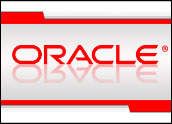
When Oracle announced it had agreed to buy the established business intelligence vendor Hyperion for US$3.3 billion, executives did not waste time explaining one of its motives.
“Hyperion is the latest move in our strategy to expand Oracle’s offerings to SAP customers,” Oracle President Charles Phillips stated. “Thousands of SAP customers rely on Hyperion as their financial consolidation, analysis and reporting system of record.”
Oracle already has PeopleSoft HR, Siebel CRM, G-Log, Demantra, i-flex, Oracle Retail and Oracle Fusion Middleware installed at SAP’s largest ERP (enterprise resource planning) customers, he noted, adding, “Now, Oracle’s Hyperion software will be the lens through which SAP’s most important customers view and analyze their underlying SAP ERP data.”
Long-Standing Competition
SAP and Oracle have a long-standing rivalry in the ERP space. When Oracle — as well as the rest of the software market — was distracted by its hostile acquisition of PeopleSoft, SAP was quick to remind buyers who the stable vendors were in the marketplace. Oracle, for its part, has spent some $25 billion in acquisitions in order to overtake SAP’s lead in the market.
So, is the Hyperion acquisition merely another skirmish in this war? To hear SAP tell it, yes — and a fruitless one at that.
“Customers tell us that the strategic value they get out of their technology investments comes from business software applications that manage their business and business processes,” Bill Wohl, vice president and head of SAP’s product technology group communications, told CRM Buyer.
“That is the core of our business. Oracle, by contrast, buys a lot of tools that sit around business software. The real competition, though, is around the business applications — not the tools,” he noted.
Also, Oracle always has had a presence in SAP accounts from a database perspective, Wohl stated, so the overlap between Hyperion and SAP is not significant.
The Bottom Line
“SAP has more than 2.5 times the market share in applications than Oracle does, and gained 3 percentage points of market share in 2006 alone,” he added. “In fact, SAP sold more applications software in the fourth quarter of 2006 than Oracle and all of its acquired companies sold during the entire year.”
Additionally, Oracle’s buying spree of companies have resulted in a cluttered application landscape that has not benefited the customers, Wohl commented, adding, “You always hear about how good these deals are for the shareholders, but what about the end users?”
Higher Value, Higher Margin
Hyperion is a more significant acquisition than some of the smaller buys Oracle has made. It is similar to Oracle’s acquisition of Siebel in that Hyperion is a top vendor in a high-growth, high-margin subsector of the software space. Meanwhile, the ERP and database market is very mature.
“While both Oracle and SAP have data analysis tools, most companies find they can justify an investment in tools like Cognos, Hyperion or Business Objects to do more complex reporting, consolidate and analyze data from multiple systems, or streamline financial or other analysis,” Rebecca Wettemann, vice president of Nucleus Research, told CRM Buyer.
Moving Up
This will have an impact in the SAP versus Oracle contest, Russ Cobb, vice president of marketing at SAS, told CRM Buyer.
“Oracle’s acquisition of Hyperion will allow it to move up the value chain in terms of what they are offering to clients relative to SAP, especially with CFOs and other financial service people — Hyperion will definitely give Oracle a leg up on SAP,” he said.
“(SAP’s recently acquired) Pilot Software, however, was a niche acquisition, and doesn’t give SAP any where near the footprint that Hyperion will give Oracle,” Cobb noted.
SAP will indeed face intensified competition once Oracle has digested its latest vendor, Wettemann added.
“This gives Oracle one of the best-of-breed BI suites, while SAP continues to subsist on its existing ERP-focused data analysis tools,” she stated.





















































